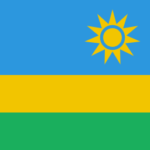Fees for registering Uganda trademarks
Service Process
Trademark registration time
The current trademark regulations in Uganda are mainly based on the Trademark Law 2010, which was promulgated on September 3, 2010. The Uganda Trademark Office is responsible for managing trademark affairs and the official language is English. The exclusive right to use a trademark needs to be obtained through registration. Trademark registration is not mandatory, but in order to protect the trademark or renew it, it must be registered in accordance with the law. Uganda's trademark registration follows the principle of "application first".
Uganda is a party to international intellectual property treaties such as the Paris Convention, WIPO Convention, XTRIPS Agreement, Geneva Convention, Banjul Protocol, and Nairobi Treaty; Since it has not yet been included in the Madrid system, trademark registration can only be processed through "single country registration" or "African Industrial Property Organization".
Trademark Registration Process
At present, the Uganda Trademark Office adopts the Nice Classification 11th edition for the description of goods and services and does not accept applications for multiple categories in one form. The elements that can be registered as trademarks in Uganda include: text, name, graphics, three-dimensional logo, color, slogan, sound, smell (olfactory trademark), commercial appearance/decoration, etc.
If the applicant does not reside in Uganda, they must entrust a specialized agent in their home country to handle the matter. The basic materials required for trademark application are:
1. Trademark design;
2. Specific categories and product/service items;
3. Name and address of the applicant;
4. Scanned copy of the power of attorney;
5.If priority is declared, proof of priority must be provided.
The main process for applying for registration of a trademark in Uganda is: inquiry, application, acceptance, examination, announcement, approval, and issuance of a certificate. The Uganda Trademark Office requires all trademarks to undergo official searches before formally submitting registration applications. If the search results show the existence of the same prior trademark, the applicant may consider taking measures against the prior trademark, removing the prior obstacles before submitting a new application, or submitting the application according to the original plan and taking measures against the prior trademark after later rejection. After the application is submitted, it usually takes 1-2 weeks to decide whether to accept it. The examiner will conduct formal and substantive examinations on the application. Formal examination mainly examines whether the application requirements and classification information comply with regulations. Substantive examination includes examination of the distinctiveness of the commercial cup, whether it violates the prohibition and prohibition clauses, and whether it conflicts with the prior trademark. After the review is approved, a non disclosure notice will be issued. Within 60 days from the date of the announcement, there will be an objection cabinet, and any interested party or prior rights holder may raise objections. The main reasons for raising objections are:
1. Conflict with prior trademarks, such as owning a prior registered trademark;
2. The trademark lacks distinctiveness;
3. The trademark has adverse effects;
4. Malicious registration;
5. Conflict with other prior rights, such as trade name rights, design rights, copyrights, personal names, etc;
6. The slogan trademark lacks originality.
If there are no objections or objections are not valid during the announcement period, the registration can be approved and a registration certificate can be issued; If the review fails, a rejection notice will be issued and the applicant will be required to respond within the time limit specified in the rejection notice. In a smooth situation, trademark registration in Uganda takes about one year; If things don't go smoothly and there are objections or rejections along the way, the time will be greatly extended, possibly taking about 2 years.
Trademark registration materials
The Uganda trademark is valid for 7 years after registration, starting from the date of application; Sales exhibitions can be processed within 6 months before the expiration date, with a grace period of 1 month; The renewal is valid for 10 years.
Start Your Trademark Business
Start Registration

do not understand? Contact us

do not understand? Contact us

do not understand? Contact us

do not understand? Contact us


 Uganda
Uganda